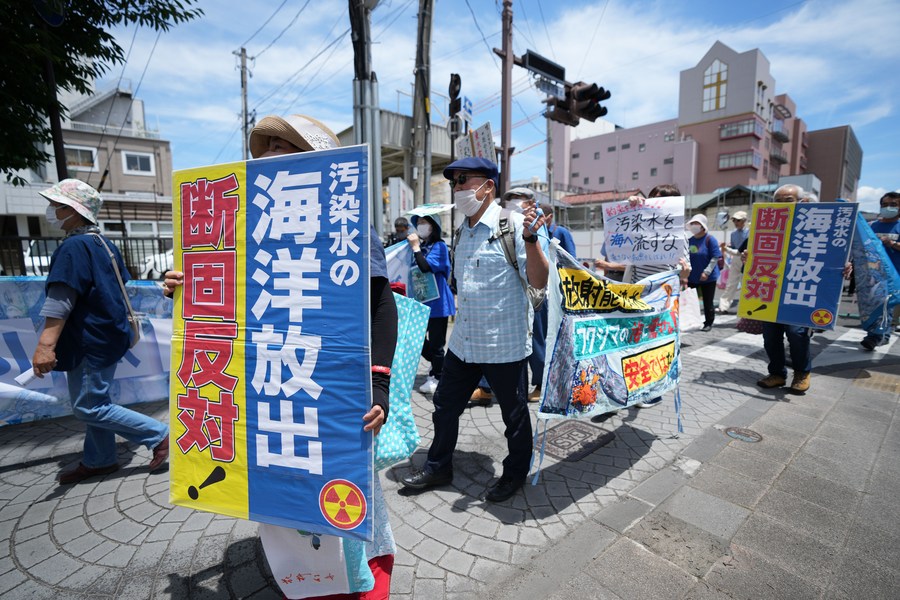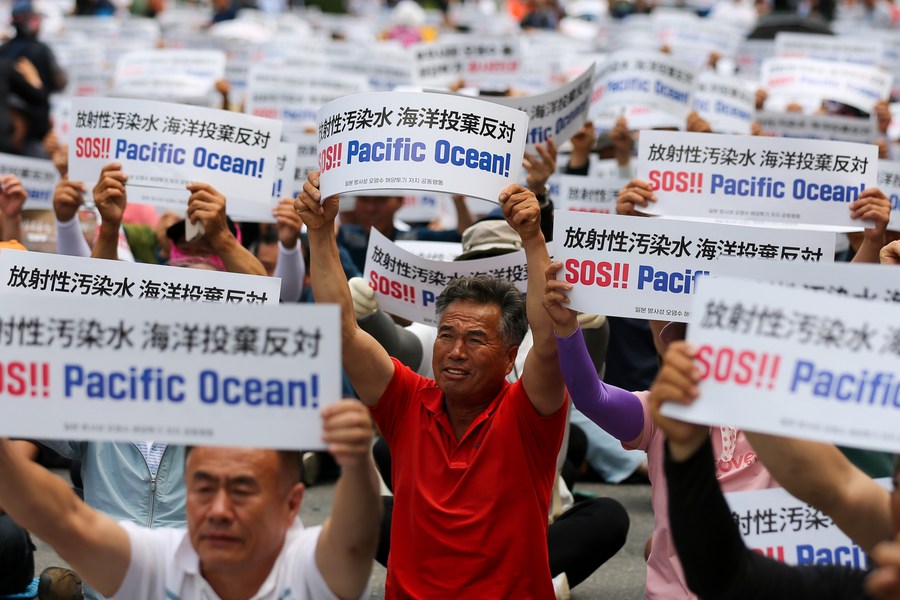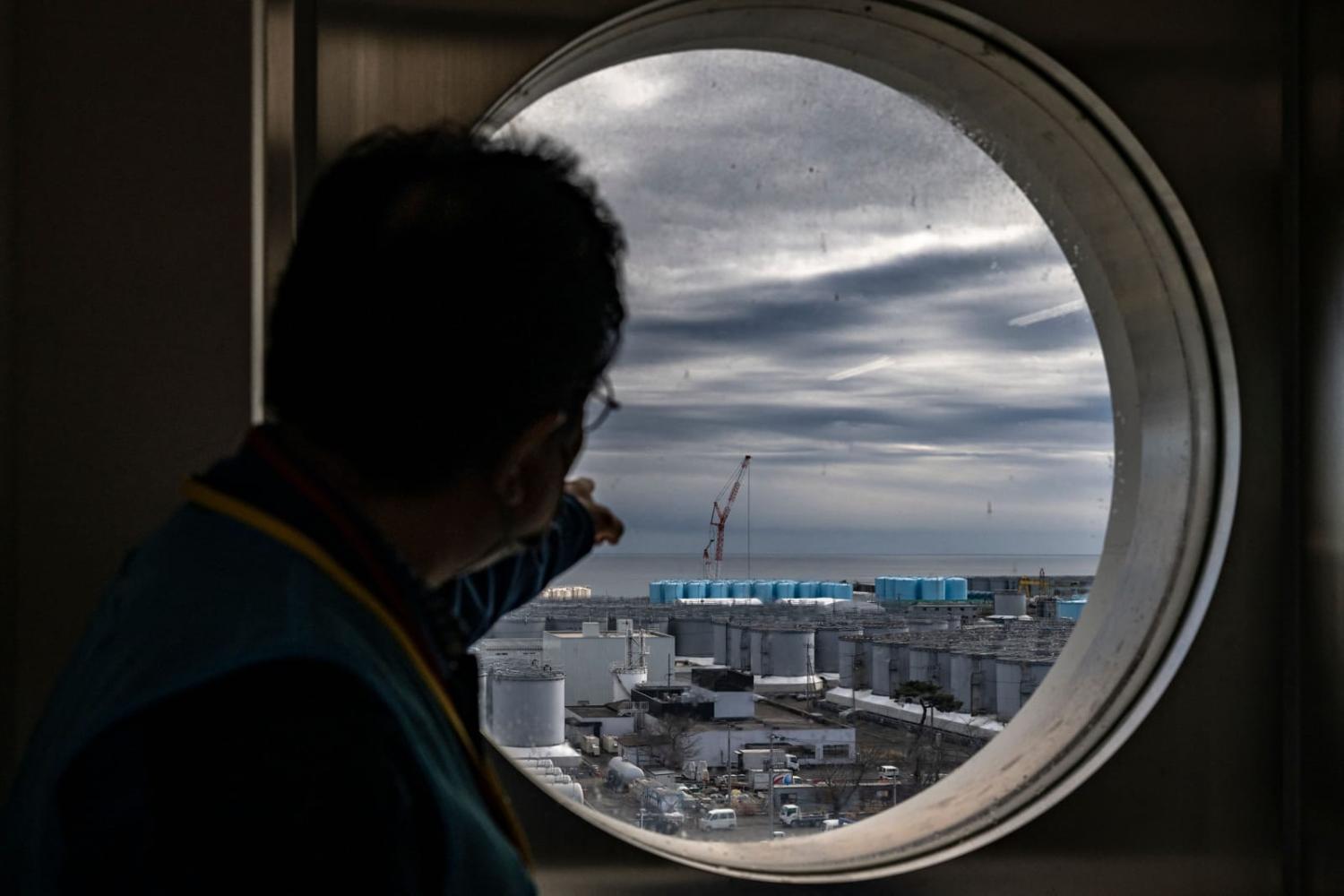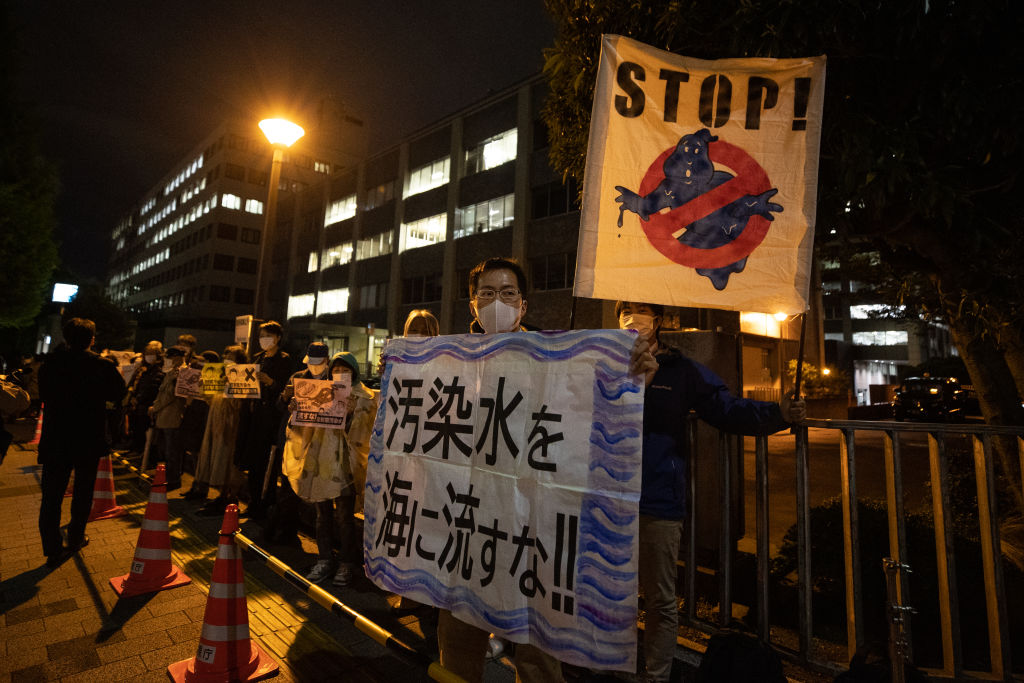France shooting: Policeman charged over teen's traffic stop death

Protesters march in honor of the mother of Nahel, a 17-year-old boy shot dead by a police officer after refusing to obey a traffic stop in Nanterre, France. Photo: VALERIE DUBOIS / HANS LUCAS / AFP
By Kathryn Armstrong for the BBC
A French policeman has been charged with homicide and is in custody over the killing of a teenager near Paris on Tuesday local time.
The 17-year-old, named as Nahel M, was shot at point-blank range as he drove off and crashed soon afterwards.
Anger at his killing has sparked violence across the country. A march led by the boy's mother was marred by clashes on Thursday afternoon.
In a third night of unrest, protesters were arrested in Lille and Marseille.
In the town of Nanterre, where the teenager was killed, a huge fire engulfed the ground floor of a building where a bank is located.
Video and pictures on social media also appear to show piles of rubbish ablaze in several places.
Bus and tram services in Paris and the wider region stopped operating in preparation for further violence. Some suburbs have declared night-time curfews.
Transport services have also been disrupted in the cities of Lille and Tours.
Some 40,000 police have been deployed across France in an attempt to deal with the unrest, after cars and buildings were damaged in rioting in several French cities on Tuesday and Wednesday night.
Gérald Darmanin, the country's interior minister, said 170 officers were injured in Wednesday night's clashes alone and 180 people were arrested.

Cars in Nanterre are set on fire during a protest following the death of a French teenager in a traffic stop. Photo: AMAURY CORNU / HANS LUCAS / AFP
Officers were injured on Thursday afternoon as well, during violence in Nanterre that followed a largely peaceful march calling for justice. It was attended by more than 6000 people.
Élisabeth Borne, the French prime minister, said she understood the outpouring of emotion following the 17-year-old's death, but condemned the riots.
"Nothing justifies the violence that's occurred," she said.
The teenager's death has sparked a wider conversation about the power of the police and the relationship between the authorities and those from France's suburbs, who feel segregated from the country's prosperous city centres.
"We have a law and judicial system that protects police officers and it creates a culture of impunity in France," Nahel's lawyer, Yassine Bouzrou, told the BBC World Service's Newshour programme.
But Nahel's mother said she did not blame the police in general, or the system, for the killing - just the officer who fired the lethal shot that killed her son.
The officer accused of killing him said he had fired because he felt his life was in danger. His lawyer told French radio station RTL that his client discharged his firearm "in full compliance of the law".
- BBC
* This story was first published by the BBC.
Protesters march in honor of the mother of Nahel, a 17-year-old boy shot dead by a police officer after refusing to obey a traffic stop in Nanterre, France. Photo: VALERIE DUBOIS / HANS LUCAS / AFP
By Kathryn Armstrong for the BBC
A French policeman has been charged with homicide and is in custody over the killing of a teenager near Paris on Tuesday local time.
The 17-year-old, named as Nahel M, was shot at point-blank range as he drove off and crashed soon afterwards.
Anger at his killing has sparked violence across the country. A march led by the boy's mother was marred by clashes on Thursday afternoon.
In a third night of unrest, protesters were arrested in Lille and Marseille.
In the town of Nanterre, where the teenager was killed, a huge fire engulfed the ground floor of a building where a bank is located.
Video and pictures on social media also appear to show piles of rubbish ablaze in several places.
Bus and tram services in Paris and the wider region stopped operating in preparation for further violence. Some suburbs have declared night-time curfews.
Transport services have also been disrupted in the cities of Lille and Tours.
Some 40,000 police have been deployed across France in an attempt to deal with the unrest, after cars and buildings were damaged in rioting in several French cities on Tuesday and Wednesday night.
Gérald Darmanin, the country's interior minister, said 170 officers were injured in Wednesday night's clashes alone and 180 people were arrested.
Cars in Nanterre are set on fire during a protest following the death of a French teenager in a traffic stop. Photo: AMAURY CORNU / HANS LUCAS / AFP
Officers were injured on Thursday afternoon as well, during violence in Nanterre that followed a largely peaceful march calling for justice. It was attended by more than 6000 people.
Élisabeth Borne, the French prime minister, said she understood the outpouring of emotion following the 17-year-old's death, but condemned the riots.
"Nothing justifies the violence that's occurred," she said.
The teenager's death has sparked a wider conversation about the power of the police and the relationship between the authorities and those from France's suburbs, who feel segregated from the country's prosperous city centres.
"We have a law and judicial system that protects police officers and it creates a culture of impunity in France," Nahel's lawyer, Yassine Bouzrou, told the BBC World Service's Newshour programme.
But Nahel's mother said she did not blame the police in general, or the system, for the killing - just the officer who fired the lethal shot that killed her son.
The officer accused of killing him said he had fired because he felt his life was in danger. His lawyer told French radio station RTL that his client discharged his firearm "in full compliance of the law".
- BBC
* This story was first published by the BBC.





















 (
(


